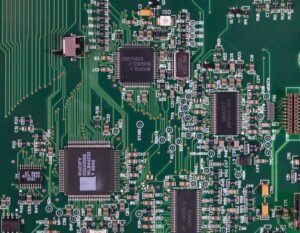AI Can Make Video
Artificial intelligence (AI) has made significant advancements in various industries, and the field of videography is no exception. With AI-powered algorithms and tools, video editing and production processes have become faster, more efficient, and more creative. AI can automate tasks such as video editing, transcription, and even generate realistic deepfake videos. In this article, we will explore the ways AI can enhance and revolutionize video production.
Key Takeaways
- AI-powered video editing tools enable faster and more efficient post-production processes.
- Deepfake technology, fueled by AI, can generate highly realistic but potentially controversial videos.
- AI transcription services can automatically transcribe video content, saving time and effort.
- Virtual reality and augmented reality technologies are being integrated with AI to create immersive video experiences.
**Video editing** is a crucial aspect of the videography process, where AI can be incredibly helpful. Traditional video editing requires time-consuming manual work, such as separating footage, choosing the best shots, and adding effects. However, with AI-powered tools, these processes can now be automated, saving both time and effort for video editors. *AI algorithms can analyze video footage, identify the best shots, and splice them together with seamless transitions*.
Another area where AI is making waves is in the realm of **deepfake technology**. Deepfakes use AI algorithms to manipulate and alter videos, often replacing someone’s face with another person’s face. While deepfakes can be entertaining, they also raise ethical concerns, as they can be used for malicious purposes like spreading misinformation or creating fake news. *AI researchers and developers are working on ways to detect and combat deepfake videos*.
AI Transcription Services
Transcribing long videos can be a time-consuming task, especially for content creators and journalists. However, with **AI transcription services**, this process has become much more efficient. AI algorithms can automatically transcribe video content, accurately converting spoken words into written text. This saves valuable time and effort for content creators, allowing them to focus on other aspects of their work. *AI transcription services also come with features like speaker identification and timestamping, making it easier to navigate through the transcribed content*.
In the world of videography, **immersive experiences** are gaining popularity, and AI is playing a significant role in this area as well. By combining AI with **virtual reality (VR) and augmented reality (AR)** technologies, videos can be transformed into interactive and immersive experiences. AI algorithms can analyze user behavior within the VR or AR environment, adapting and adjusting the video content accordingly. This integration creates highly engaging and personalized video experiences for viewers.
Tables and Data Points
| AI Application | Benefits |
|---|---|
| Automated Video Editing |
|
| Deepfake Videos |
|
Furthermore, AI can also enhance video production through **automated color correction and grading**. Traditionally, color correction was a time-consuming manual process that required skilled professionals. Now, AI algorithms can analyze the video’s color profile and automatically adjust it to improve the overall visual aesthetics. This allows content creators to achieve consistent and visually appealing results without extensive knowledge of color grading techniques.
It is important to note that while AI advancements in video production offer numerous benefits, there are also potential drawbacks and ethical considerations. AI-generated deepfake videos, for example, have the potential to spread misinformation and create harm. Therefore, it is crucial to have measures in place to identify and combat the misuse of AI in video production.
Conclusion
AI has transformed the landscape of video production, making it faster, more efficient, and more creative. From automating video editing tasks to generating deepfake videos and providing transcription services, AI offers a range of tools and capabilities that streamline the video production process. However, as with any powerful technology, it must be used responsibly and ethically to maximize its benefits while minimizing potential harm. AI in video production will continue to evolve, enabling content creators and videographers to push the boundaries of creativity and create immersive experiences for their audiences.

Common Misconceptions
AI Cannot Create Human-like Consciousness
One common misconception about AI is that it has the capability to generate human-like consciousness. While AI technology has made significant advancements in fields like natural language processing and image recognition, it is still incapable of experiencing emotions or having subjective experiences like humans.
- AI lacks self-awareness and consciousness.
- AI systems cannot have feelings or emotions.
- AI is programmed to mimic human behavior but does not possess genuine consciousness.
AI Is Infallible and Bias-Free
Another misconception is that AI is infallible and completely free from biases. In reality, AI systems are only as unbiased and accurate as the data they are trained on. If the data used to train an AI system is biased or incomplete, it can lead to biased outcomes and replicate existing societal prejudices.
- AI can inherit biases from training data and perpetuate discrimination.
- AI can amplify existing social disparities and inequalities if not developed ethically.
- AI systems need thoughtful design and continuous monitoring to prevent bias.
AI Will Take Over All Human Jobs
Many people fear that AI will eliminate the need for humans in the workforce and cause widespread unemployment. However, while AI has the potential to automate certain tasks and job roles, it is unlikely to completely replace humans in all aspects of work.
- AI is better-suited for tasks that involve pattern recognition and data processing.
- AI will likely augment human work, rather than fully replace it.
- AI can create new job opportunities and improve efficiency in many industries.
All AI Systems Are Superintelligent
Contrary to popular belief, not all AI systems are superintelligent or capable of performing at a level exceeding human intelligence. AI technologies can be classified into various levels of intelligence, ranging from narrow AI that focuses on specific tasks to general AI that can replicate human cognitive abilities across a wide range of tasks.
- Most AI systems are designed for specific tasks and lack general intelligence.
- Building superintelligent AI systems is a complex and ongoing research challenge.
- AI generally excels in specific areas, but lacks the comprehensive understanding of the world that humans possess.
AI Is Designed to Replace Humans
The idea that AI systems are developed with the purpose of replacing humans is another common misconception. In reality, AI is primarily designed to assist and augment human capabilities, rather than replace them. The goal is to enhance efficiency, productivity, and decision-making processes.
- AI is intended to complement human skills, not render them obsolete.
- AI can automate repetitive and mundane tasks, freeing up human resources for more complex and creative work.
- AI is a tool to assist humans and make their lives easier, rather than to replace them entirely.

AI in Social Media
Table illustrating how AI is used in social media platforms such as Facebook, Instagram, and Twitter.
Impact of AI on Healthcare
Data showcasing the positive influence of AI technology in the healthcare industry.
AI in Autonomous Vehicles
Statistics highlighting the use of AI in self-driving cars and the potential benefits.
AI in Financial Services
Table displaying how AI is transforming the financial sector, including banking and investment.
AI in Natural Language Processing
Data presenting the advancements in AI technology in understanding and processing human language.
AI in Gaming
Table showing how AI is incorporated into video games to enhance player experience.
AI in E-commerce
Statistics demonstrating the impact of AI in online shopping and personalized recommendations.
AI in Cybersecurity
Data highlighting the role of AI in detecting and preventing cyber threats.
AI in Weather Prediction
Table illustrating how AI technology improves weather forecasting accuracy and prediction.
AI in Art and Creativity
Statistics showcasing the integration of AI in artistic creations and the impact on the creative industry.
In today’s digital age, AI is rapidly expanding its reach into various sectors. The following tables emphasize the utilization of AI in social media platforms, healthcare, autonomous vehicles, financial services, natural language processing, gaming, e-commerce, cybersecurity, weather prediction, and art. By incorporating AI, these areas have experienced significant advancements and improvements in efficiency, accuracy, and overall user experience. With continuous innovation in AI, we can expect further transformative power in these industries and many more in the future.
Frequently Asked Questions
What is AI Can Make Video?
AI Can Make Video is a software that utilizes artificial intelligence (AI) algorithms to generate video titles automatically.
How does AI Can Make Video work?
AI Can Make Video uses machine learning techniques to analyze the content of a video and generate relevant and catchy titles based on the video’s content and context.
Can AI Can Make Video be used for any type of video?
Yes, AI Can Make Video can be used for various types of videos including but not limited to educational videos, marketing videos, entertainment videos, and more.
Is AI Can Make Video capable of generating multiple video titles?
Yes, AI Can Make Video can generate multiple video title options for a given video. Users can choose the most suitable title from the suggestions provided.
What are the advantages of using AI Can Make Video?
The advantages of using AI Can Make Video include saving time and effort in coming up with video titles manually, enhancing the overall visibility and appeal of the videos, and potentially increasing viewership and engagement.
Are the generated video titles by AI Can Make Video SEO-friendly?
Yes, AI Can Make Video is designed to generate video titles that are optimized for search engine optimization (SEO). The titles aim to attract more viewers and improve the likelihood of the video being discovered in search results.
Can I customize the video titles generated by AI Can Make Video?
Although AI Can Make Video provides automatic title generation, users have the flexibility to customize and edit the titles as per their preferences or specific requirements.
What languages does AI Can Make Video support?
Currently, AI Can Make Video supports multiple languages including English, Spanish, French, German, Italian, Japanese, and Chinese. It is continuously expanding its language support.
Does AI Can Make Video require an internet connection?
AI Can Make Video requires an internet connection to access its AI algorithms and provide real-time title generation.
Is AI Can Make Video available on all platforms?
Yes, AI Can Make Video is available on various platforms including web browsers, mobile devices (both iOS and Android), and desktop applications. Users can access it from any compatible device with an internet connection.





